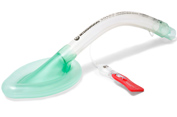A Comparison between a Two Person Insertion Technique of Laryngeal Mask Airway and the Classic One Person Technique
DOI:
https://doi.org/10.31661/gmj.v2i4.148Keywords:
laryngeal mask airway, carbon dioxide, oxygen saturation, TechniqueAbstract
Background: Various studies are seeking to find new methods to improve techniques of laryngeal mask airway (LMA) insertion and reduce possible complications. In this study, we embarked on a clinical study to investigate the advantages of a new insertion method of laryngeal mask and to compare it with the classic method.
Materials and Methods: Two hundred patients aged 20-60 years old in 2012 were randomly divided into two groups allocated to receive either the new technique of insertion of LMA (two-person method) or the classic method (one-person method). In the two person method, jaw thrust and mouth opening is done by a technician and then anesthesiologist inserts the LMA. Oxygen saturation, time to insert laryngeal mask, end-tidal carbon dioxide pressure, and the ease of insertion in both groups were measured. The collected data were analyzed by using ANOVA test. P-value< 0.05 was considered as statistically significant.
Results: The measured end-tidal pressure of carbon dioxide (ETCO2) and saturation of O2 were 31.68 mmHg and 98.87 % in the classic method and 30.47 mmHg and 99.42 % in the two-person method, respectively. These differences were statistically significant for both values. However, the discrepancy of insertion time and ease of insertion between the two groups were not statistically considerable.
Conclusion: The new technique introduced in this study is associated with higher rate of success, as evidenced by enhancement of saturation of O2 and reduction of ETCO2. Therefore, this method could be considered as a safe and effective method in order to establish a secure airway in anesthetized patients in future studies.








